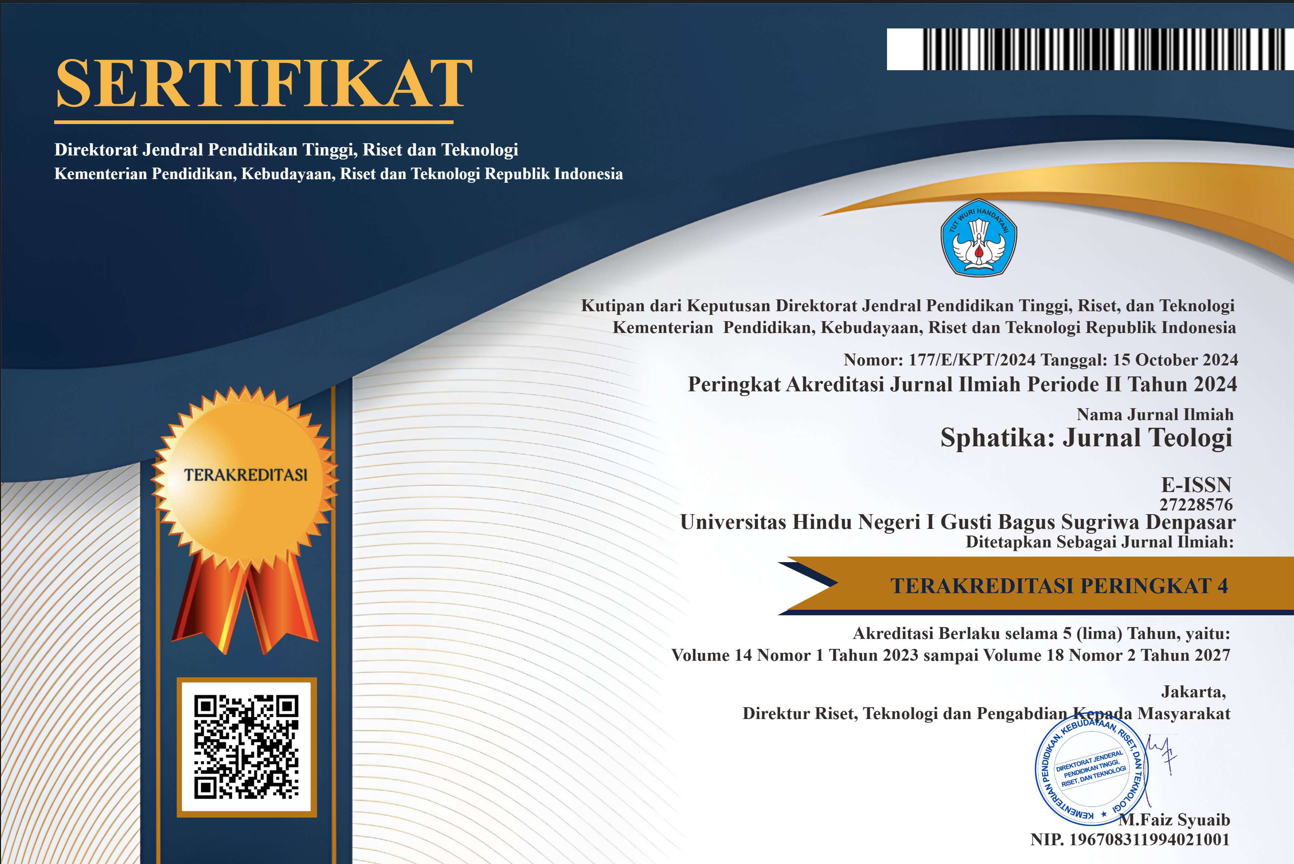Dinamika Sampradaya di Bali
DOI:
https://doi.org/10.25078/sphatika.v13i1.1121Keywords:
Balinese culture; dynamics; Hinduism; sampradayaAbstract
The topic of this paper is the phenomenon of sampradayas within Hinduism in Bali. Until now, very few social researchers have taken them into account. Therefore, I hope that I can disclose some important things related to social religious dynamics of the Balinese Hindu community since the appearance of sampradayas in the second half of the 20th century. The paper will explain the characteristics of three sampradayas, the response of Balinese Hindu to them, and their influence on the institution of Parisada and the institution of Desa Pekraman.
The research is qualitative, using field observation, interviews with the respondents, participation in their activities, and collecting other important data. To understand the influence of sampradayas on the institution of Parisada and the institution of Desa Pekraman I collected information, which was reported and documented by the mass media. Then, I analyzed the data using the anthropology of religion’s theory.
In the field find the facts that the appearance of sampradayas have caused different perceptions among Balinese Hindus, which generally can be separated into three types: those who accept the sampradayas as a spiritual messenger; those who ignore the existence of sampradayas; and those who are suspicious about their appearance, that they would be harmful to the Balinese Hindu order, which is handed down from generation to generation. The culminating point of that rejection is that the government banned a sampradaya in 1984.
References
Agastia, IB. G, 2001, “Sadhaka: Membaca dan Memahami Siwasasana dan Wratisasana” dalam: Setia, P. (eds.), Eksistensi Sadhaka dalam Agama Hindu, 1 – 9, Pustaka Manikgeni, Denpasar
Dharmayuda, IM.S, 2001, Desa Adat: Kesatuan Masyarakat Hukum Adat di Propinsi Bali, Upada Sastra, Denpasar
Picard, M, 2004, “What’s in a Name?” Agama Hindu Bali in the Making in: Ramsted, M. (eds.), Hinduism in Modern Indonesia: A Minority Religion Between Local, National, and Global Interests, 56 – 75, Routledge Curzon, New York
Pitana, IG, 1994, “Desa Adat dalam Arus Modernisasi” dalam: Pitana, IG. (eds.), Dinamika Masyarakat dan Kebudayaan Bali, 137 – 170, Bali Post, Denpasar
Ramstedt, M, 2004, “Negotiating Identities – Indonesian ‘Hindus’ Between Local, National, and Global interests” in: Ramsted, M. (eds.), Hinduism in Modern Indonesia: A Minority Religion Between Local, National, and Global Interests, 1– 34, Routledge Curzon, New York
Sastra, G.S, 2002, “Hindu di Bali Beda Dengan India”, Majalah Sarad, Juni, 27, 37–39
Somvir, Y, 2004, “Cultural and Religious Interaction between Modern India and Indonesia” in: Ramsted, M. (eds.), Hinduism in Modern Indonesia: A Minority Religion Between Local, National, and Global Interests, 255–263, Routledge Curzon, New York
Sudharta, T R, Atmaja, I.B.O.P, 2001, Upadeça Tentang Ajaran-Ajaran Agama Hindu, Paramita, Surabaya
Suharja, A. (eds), 2004, 20 Tahun Peradah Indonesia: Meretas Jalan Menetaskan Peran, LKPP Peradah Indonesia, Jakarta
Sumber – sumber dari media massa cetak:
Majalah Sarad No. 21 edisi September 2001
___________ No. 34 edisi Oktober 2002
Harian Bali Post tanggal 19 Desember 2001
_____________ tanggal 22 November 2001
_____________ tanggal 24 November 2001
_____________ tanggal 27 November 2001
Sumber-sumber dari situs Internet:
Aryx, “Agama Bali atau Agama Hindu?” http://cybertokoh.com/mod.php?mod=publisher&op=viewarticle&artid=1096, diakses tgl 4 September, 2020















